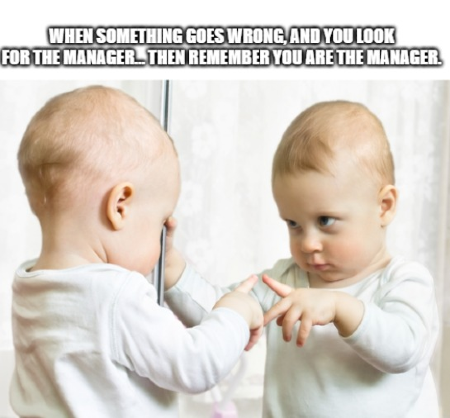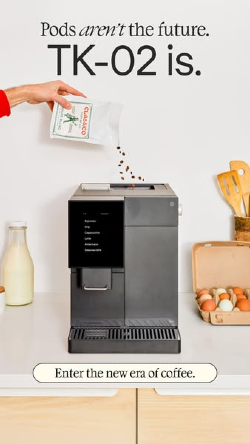The Marketer’s Black Box
🕵️Cracking the Code on Invisible Margin Killers, Walmart and Google Bet Big on Immersive Commerce, and more!


Howdy readers 🥰

In this newsletter, you’ll find:
🕵️ The Marketer’s Black Box: Cracking the Code on Invisible Margin Killers
🛍️ Walmart and Google Bet Big on Immersive Commerce
🏆 Ad of the Day
If you’re new to ScaleUP, then a hearty welcome! You and 50k+ CEOs, CMOS, and marketers have reached the right place. Let’s get into it, shall we? Oh! Before you forget, if someone forwarded this newsletter to you, don't forget to subscribe to our newsletter so you never miss out!

Together with Levanta
PPC costs keep rising. Affiliate marketing gives you another path.
If you sell on Amazon, you’ve seen it firsthand—PPC costs are up, and returns are getting harder to justify. But there’s a smarter way to scale without burning through budget.
More sellers are shifting to affiliate marketing—a model that brings in external traffic, boosts your organic rankings, and only costs money when it drives a sale.
How?Amazon rewards sellers who drive traffic from outside platforms—like blogs, review sites, and social posts. That traffic helps your listing perform better and convert higher.
The result:
✅ Lower ad spend
✅ Higher rankings
✅ More sales
Levanta has put together a free guide that breaks it all down:
- How to set up an affiliate program that works
- Which networks are best for Amazon sellers
- How to find quality affiliates
- Common mistakes (and how to avoid them)

🕵️ The Marketer’s Black Box: Cracking the Code on Invisible Margin Killers
DTC brands are bleeding profit in places they don’t measure. And here’s the twist: most “leaks” don’t show up on dashboards.
Margins aren’t just killed by poor ROAS or high CAC — they die from decisions made without context. If marketing and finance aren’t speaking in real-time, you’re scaling shadow losses.
Let’s break open the black box.
1. The 2nd Order Effect Trap
Most brands optimize for first-order impact — “Did this campaign convert?” But margin loss often happens two steps later:
- A 30%-off campaign triggers repeat customers to delay full-price purchases.
- A surge in demand creates fulfillment overtime costs you didn’t budget for.
- Aggressive discounting pulls in low-LTV customers who never repurchase.
Solution: Measure campaigns by total lifecycle margin contribution — not just D0 or D7 revenue.
2. Paid Efficiency vs. Operational Reality
Imagine a campaign that triples conversion but floods your CS team with support tickets. Or triggers stockouts that impact your best B2B buyer. That’s performance in one department… chaos in another.
Margin isn’t killed by underperforming ads — it’s killed by overperforming ads that the business wasn’t ready for.
Run Cross-Functional Stress Tests on campaigns. Ask: “If this scales 10x, what breaks?”
3. False Positives from Attribution Lag
You think Meta is crushing it. But 40% of conversions attributed to it actually came from organic brand search post-influencer push.
Your team scales the ad — but margins vanish because you’re feeding the wrong engine.
Fix this with a source-decay attribution model and LTV by entry point. The truth isn’t in platform dashboards — it’s in customer journey analysis.
4. Promotions That Degrade Your Pricing Power
One successful flash sale can anchor your pricing in customers’ minds. Over time, this trains your audience to wait for discounts, decreasing full-price conversions across all channels.
Short-term lift. Long-term bleed.
Smart brands now model the downstream effects of every promo — before launch. Drivepoint unifies real-time marketing and financial data from Shopify, Amazon, and paid channels — so you can simulate promo outcomes and see margin impact before a dollar is spent. Book your free demo now – and see Drivepoint in action!
Final Thought
You don’t need more dashboards. You need visibility into cause and consequence. Once you expose margin killers hiding in second-order effects, over-attribution, and operational cracks — you stop reacting and start engineering profit.

🛍️ Walmart and Google Bet Big on Immersive Commerce
Walmart and Google are doubling down on interactive media and metaverse experiences to reshape how consumers discover and engage with products. From shoppable videos to in-game ads, the future of e-commerce is becoming more immersive, personalized, and gamified.
The Breakdown:
1️⃣ Walmart Scales Interactive Product Videos - Walmart will roll out interactive videos for hundreds of thousands of products by 2025, expanding its partnership with Eko. These videos have already driven higher sales in categories like electronics, toys, and baby products by helping customers better understand high-consideration items.
2️⃣ Walmart Deepens Metaverse Integration - The retailer is steadily growing its metaverse presence across platforms like Roblox, Minecraft, and Zepeto. With Walmart Realm and Walmart Unlimited, it’s blending gamified experiences with commerce, even becoming the first to sell physical products on Roblox.
3️⃣ Google Launches In-Game Ads in Roblox - Google is introducing immersive ad formats within Roblox experiences, including billboards and 30-second video ads that blend into virtual environments. These ads are designed to feel natural and reward users with in-game perks.
4️⃣ Gamified Ads Are Seeing Strong Engagement - Early results show over 80% completion rates for Google’s in-game ads, with some experiences hitting 90%. Users perceive these ads as value-adding, especially when tied to rewards like currency or power-ups.
The lines between entertainment and commerce are blurring. As retail and tech giants lean into immersive shopping, brands that adapt to these new experiences will capture younger, more engaged digital consumers where they spend the most time—inside virtual worlds.

🏆 Ad of the Day

What Works:
The line "Pods aren't the future. TK-02 is." is a classic challenger statement. By directly opposing pod-based coffee machines, the brand positions itself as the modern, sustainable choice.
Without explicitly mentioning sustainability, the visual of fresh coffee beans being poured instead of pods highlights the eco-conscious aspect of the product. It subtly appeals to environmentally aware consumers.
The cascading coffee beans emphasize freshness and authenticity. Household elements like eggs and milk add a sense of realism, evoking feelings of a comforting morning ritual.
The copy "Enter the new era of coffee." invites consumers to participate in innovation.
What Could be Better:
While the TK-02 name is mentioned, the brand logo is missing. Consistent brand visibility ensures the ad builds recall even if the audience doesn't immediately click.
Broader Insights:
Encouraging User-Generated Content (UGC) with coffee enthusiasts and baristas could amplify organic reach. Hashtags like #PodFreeCoffee or #NewEraBrew could further strengthen brand positioning.

Advertise with Us
Wanna put out your message in front of over 50,000 best marketers and decision makers?

We are concerned about everything DTC and its winning strategies. If you liked what you read, why not join the 50k+ marketers from 13k+ DTC brands who have already subscribed? Just follow this.
At ScaleUP, we care about our readers and want to provide the best possible experience. That's why we always look for ways to improve our content and connect with our audience. If you'd like to stay in touch, be sure to follow us EVERYWHERE🥰
Thanks for your support :) We'll be back again with more such content 🥳

